APPENDIX A-1 (continued)
Non-Working Wireless: this category is for wireless companies only to report numbers that they have already assigned to customer equipment, but are not yet working. For example, cellular carriers often pre-package a cellular telephone with an assigned telephone number for sale to customers. Those phone numbers are assigned, but are not actually activated until after the customer purchase is made. For the purposes of the Utilization Study, each carrier must report the quantity of its non-working wireless numbers under Assigned Numbers in Part 1-Section A and separately identified in Part 2.
OCN: Operating Company Number (OCN) assignments must uniquely identify the applicant. Relative to CO Code assignments, NECA-assigned Company Codes may be used as OCN's. Companies with no prior CO Code or Company Code assignments should contact NECA (973-884-8355) to be assigned a Company Code(s). Since multiple OCNs and/or Company codes may be associated with a given company, companies with prior assignments should direct questions regarding appropriate OCN usage to the Traffic Routing Administration (TRA) on 732-699-6700
Reserved Numbers: Reserved numbers are numbers that are held by service providers at the request of specific end users or customers for their future use. Numbers held for specific end users or customers for more than 45 days shall not be classified as reserved numbers.
Special Use NXX Codes: Certain NXX codes have traditionally been reserved or designated for special uses, and have not been available for assignment by carriers for general commercial use in providing telephone numbers to customers. These NXX prefixes are restricted to such special uses as recorded public information announcements of time-of-day and weather forecasts, high-volume call-in numbers, and emergency access numbers used by the Federal Emergency Management Administration (FEMA), etc.
Type 1 Numbers: numbers pursuant to a Type 1 interconnection agreement. The Type 1 interconnection is a connection between a mobile/wireless service provider and an end office of another service provider for the purpose of originating and terminating traffic or for access to end user services (i.e. DA, Operator services, 911, etc). The interconnection consists of a facility between the mobile/wireless service provider and the end office, switch usage, and telephone numbers (only required if the mobile carrier wishes to receive originating (L/M) traffic). For the purposes of the 310 Utilization Study, both mobile/wireless service providers who have received Type 1 numbers and those service providers who have provided Type 1 numbers to mobile/wireless service providers are asked to report on those numbers at the 1000 block level.

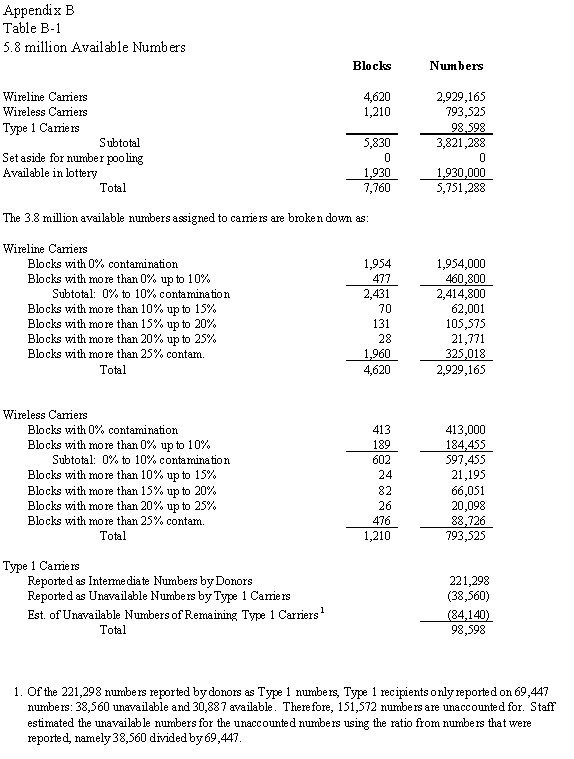
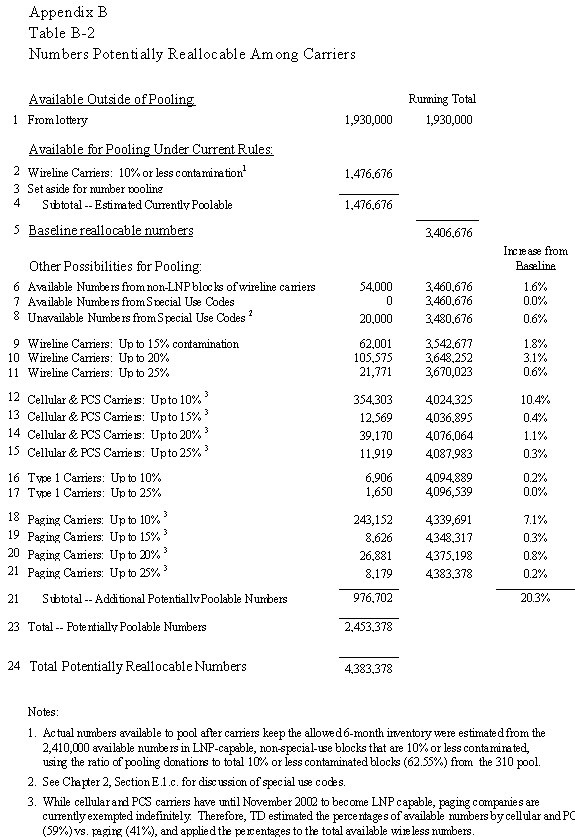
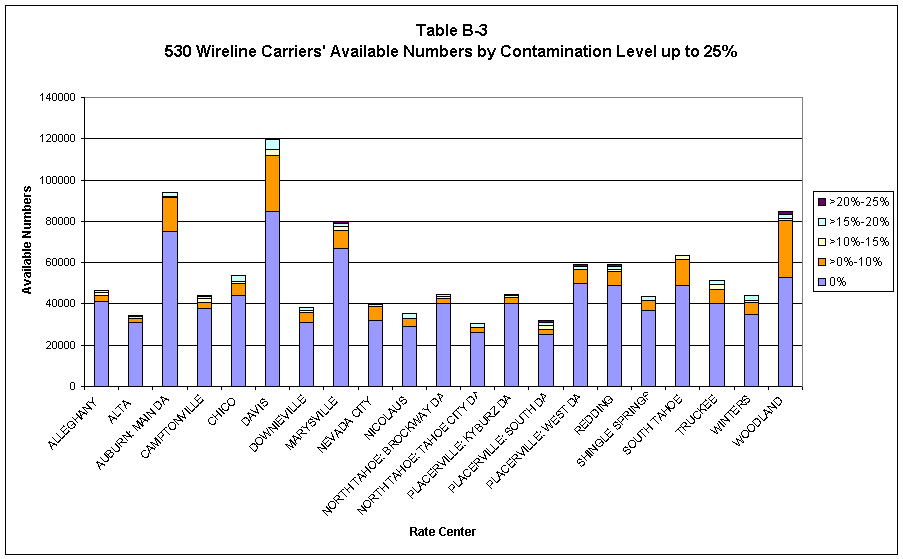
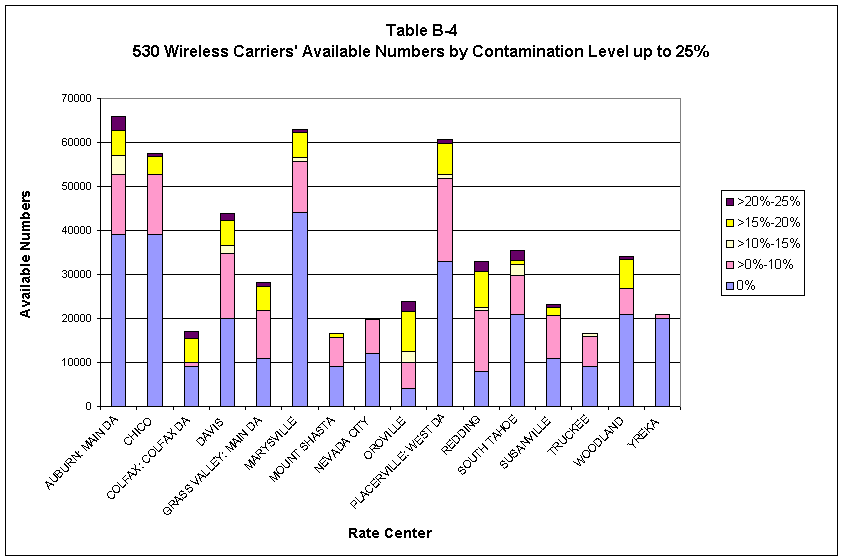
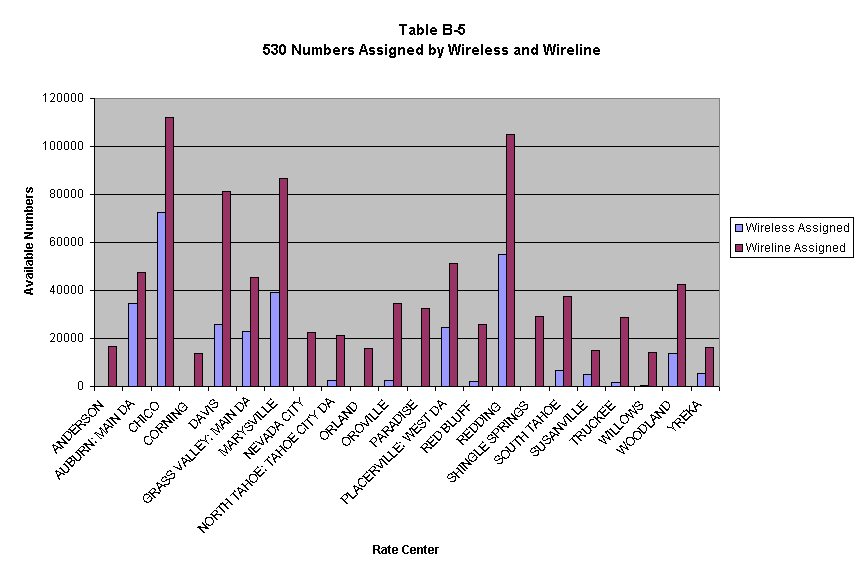
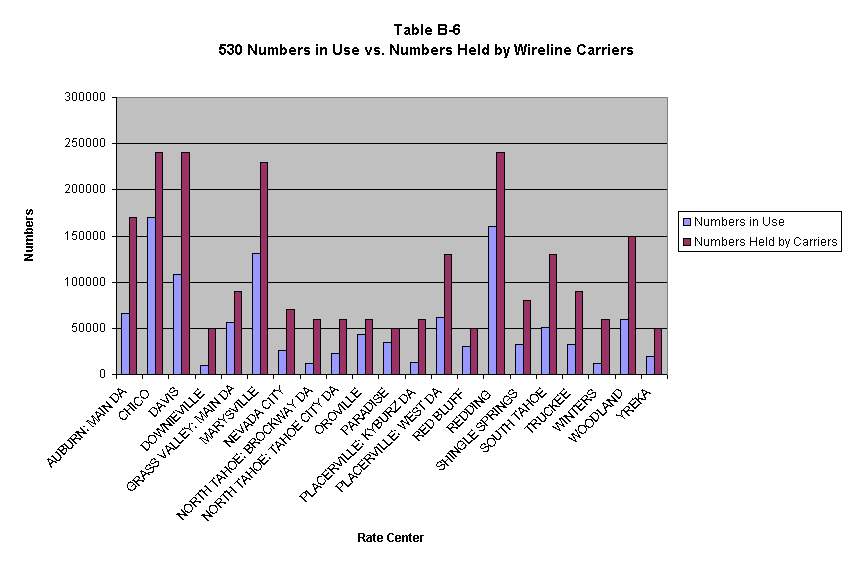
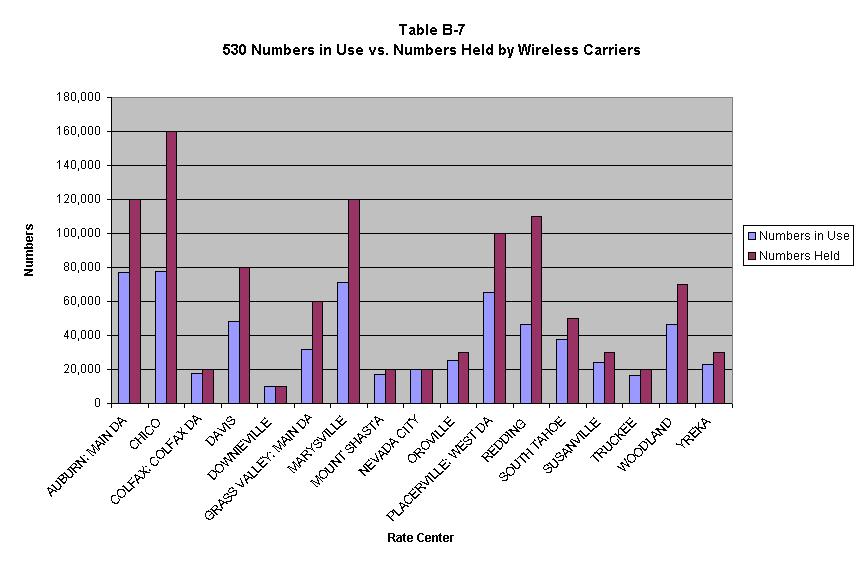
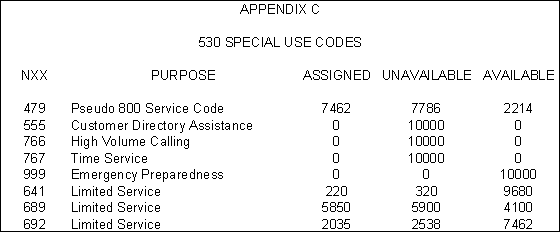
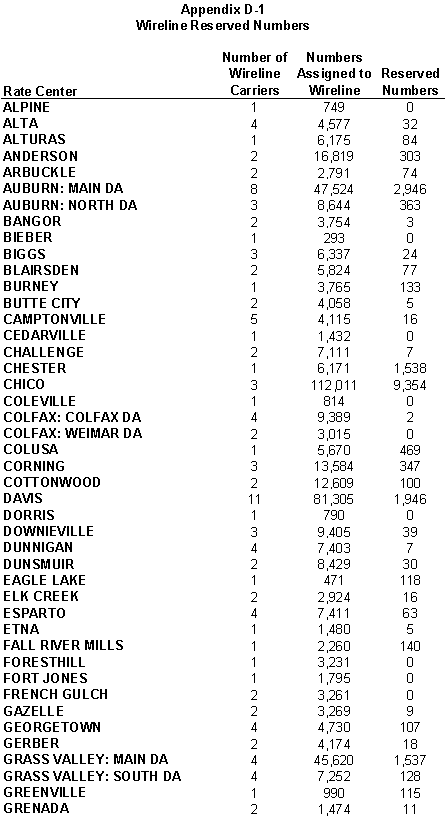
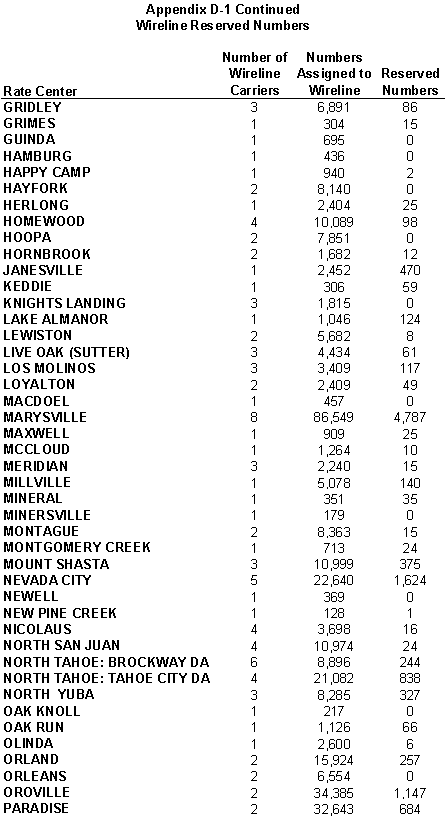
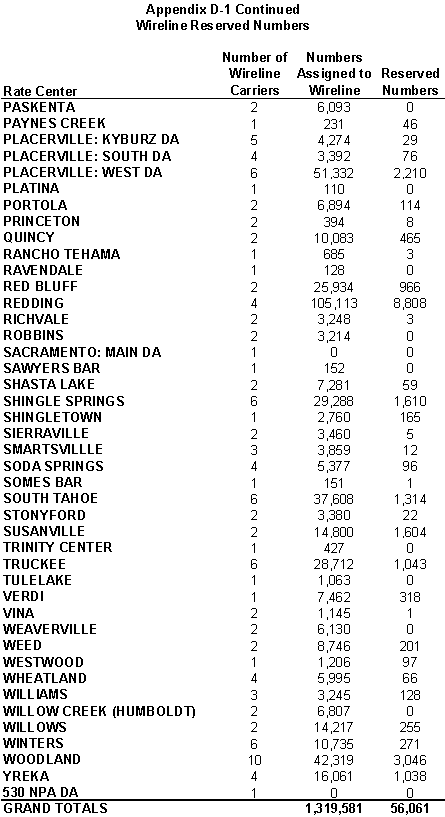
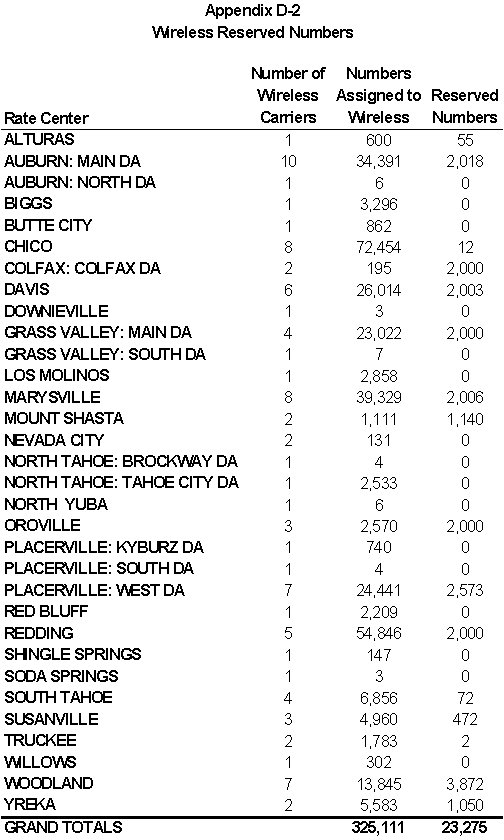
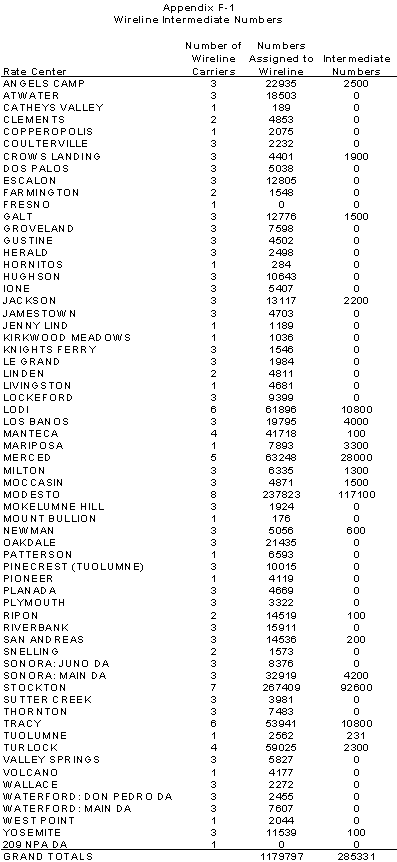
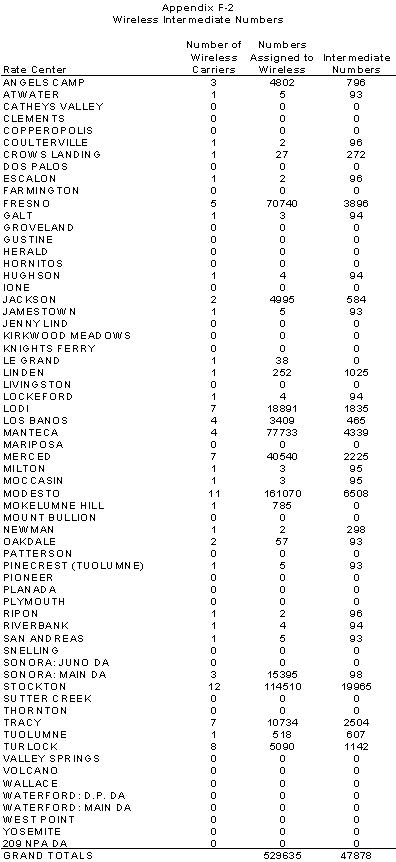

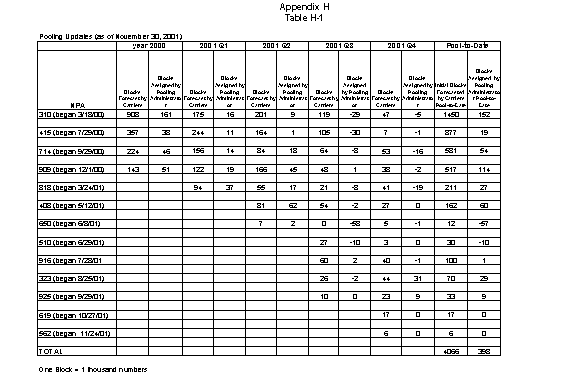
APPENDIX I
SUMMARY OF RECOMMENDATIONS
The Following Contains A Comprehensive List of Recommendations Contained In This Report:
Recommendation from Block Contamination Analysis of Wireline Carriers
· The CPUC should petition the FCC to increase the contamination level for pooling to 25%. If the FCC grants the petition, the CPUC should increase the maximum contamination level of donated blocks from 10% to 25% for all LNP capable carriers.
Recommendations from Block Contamination Analysis for Wireless Carriers
· When cellular and PCS companies become LNP capable in November 2002, the CPUC should direct those wireless carriers to donate to and participate in the pool.
· The CPUC should adopt a 25% contamination threshold for donated blocks from wireless carriers to the pool.
· The CPUC should meet with paging companies to explore options for their consolidating numbering resources in fewer rate centers, as well as other methods of reducing the number of stranded numbers held by paging companies.
· If deemed feasible, the CPUC should petition the FCC to rescind the paging companies' permanent exemption on becoming LNP capable.
Recommendation for Block Contamination Issues Affecting All Companies
_ The CPUC should monitor compliance with its fill rate and sequential numbering policies through future number utilization filings and audits.
_ The CPUC should establish penalties for non-compliance with fill rate and sequential numbering policies adopted in Decision 00-07-052.62
Recommendations For Treatment of Non-Working Wireless
_ Non-Working wireless numbers should be treated as reserved numbers and limited to 180 days, after which they should be treated as available for assignment to customers.
_ Companies should be required to maintain and update regularly the inventory records of all equipment assigned non-working wireless numbers along with the number assigned and submit such records to the CPUC upon request.
_ The CPUC should continue to monitor non-working wireless numbers in the near term by reviewing future utilization filings and include this category of numbers in any audits conducted of wireless carrier number use.
Recommendation for INP-Related Conservation Measures
_ The CPUC should adopt a schedule for transitioning INP arrangements to LNP in all other California area codes.
_ TD should investigate the whole prefix assigned to INP and reclaim the prefix if it is not being utilized.
Recommendations for Special-Use Prefixes
_ TD recommends that the CPUC initiate an investigation into the possibility of moving the numbers for time and emergency preparedness into the 555 prefix.
_ TD recommends that CPUC include in its investigation the broader use of the 555 prefix in California's area codes by providing standard 555 numbers in every California area code to provide time, emergency preparedness, and weather information.
Recommendations for Reserved Numbers
_ The CPUC should monitor reserved number use for all companies by reviewing future utilization data to ensure companies are complying with the FCC's 180-day requirement.
_ The CPUC should adopt efficient number use practices specific to companies' reserved number holdings. In developing these practices, the CPUC should investigate various alternatives including, but not limited to, 1) limits on the quantity or percentage of reserved numbers companies can hold, and 2) requirements for using reserved numbers prior to requesting new numbers.
Recommendations for Administrative Numbers
_ The CPUC should develop criteria by which companies assign administrative numbers. The CPUC should consider placing a limit on the quantity or percentage of administrative numbers companies are allowed to hold.
_ The CPUC should develop rules that require companies to limit administrative number assignments within certain blocks in a given prefix. In cases in which companies hold multiple prefixes in a single rate center, the CPUC should develop rules that require companies to limit administrative number assignments within prefixes.
Recommendations for Intermediate Numbers
_ The CPUC should monitor intermediate number use for all companies by interviewing future utilization filings to test whether potential abuses in this reporting category occur.
Recommendations for Type 1 numbers
_ Wireline and wireless carriers should improve Type 1 number inventory management. Wireline carriers should perform an annual inventory check of wireless Type 1 numbers to verify their records match that of the wireless Type 1 carriers' records. Companies should make inventory data available to the CPUC upon request. Wireline companies should recover and add to their inventories any Type 1 numbers lying dormant.
_ Type 1 carriers should be subject to number conservation techniques such as sequential numbering and fill rates. A system to ensure compliance with Type 1 number conservation measures should be developed.
_ The CPUC should consider Type 1 numbers as potential donations to the number pool. Excess and unused Type 1 numbers should be returned to the wireline carriers and either used to serve customers or donated to the number pool.
Recommendation for Aging Numbers
_ Although the CPUC has required all companies to differentiate between residential and business numbers in aging and track the two categories separately, Pacific Bell has not complied with these requirements. Pacific Bell should be redirected to differentiate between business and residential numbers in aging, track them separately, and report on each category accurately. The CPUC should assess penalties for failure to comply.
Recommendations for Audits
_ The CPUC should audit the data submitted by companies in this study and future area code utilization studies.
Recommendations for Number Pooling
_ The CPUC should work with industry groups and the Pooling Administrator to develop specific rules for companies pertaining to forecasting a six-month inventory when a number pool is authorized in a particular area code.
Recommendations for LNP
_ The CPUC should request that non-LNP capable wireline carriers in the 650 area code become LNP capable.
Recommendations for UNP
_ The CPUC should petition the FCC for authority to implement UNP statewide.
_ The CPUC should solicit comments in order to develop rules and practices necessary to implement UNP.
Recommendations for Rate Center Consolidation
_ The CPUC should undertake further investigation by ordering the telecommunications industry to develop a plan, within 180 days, for rate center consolidation.
Recommendations for Sharing of Prefixes
62 See Chapter 1 for the discussion on Decision 00-07-052._ The CPUC should further explore sharing of prefixes as a means to more efficiently utilize numbers in all area codes.
